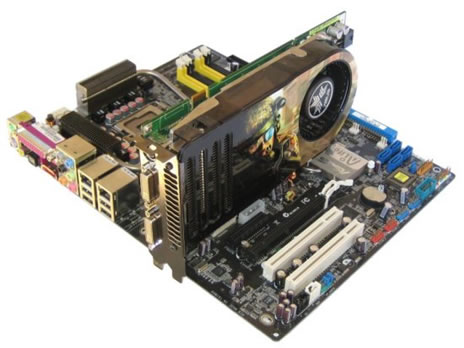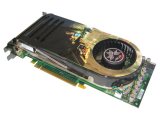The GeForce 8 series is set to expand on April 17th as Nvidia is set to release three mid-range DirectX 10 graphics cards.
While these new affordable graphics cards are going to be very attractive, it is still hard to ignore the value currently offered by the 320MB version of the GeForce 8800 GTS, which can be had for just $300. At least on paper, we can already tell this new offering is a good value as it features everything found on the original 8800 GTS with just half the memory, and a 33% lower price tag.
The GeForce 8800 GTS 320MB has captured and quickly dominated the $300+ videocard market as there is nothing else within this price range that can compete or even come close to it. This new GeForce 8-series alternative was released a little over a month ago now and availability has been excellent from the beginning, with countless options available. Today we have managed to get our hands on the ASUS EN8800GTS, which is priced at around $310 and comes with a few added bonuses.
 |
Given that this is an early version 8800 GTS 320MB graphics card, ASUS has opted to use the standard Nvidia cooler along with a green PCB. The included software is nice, ASUS has thrown in a full version copy of Ghost Recon - Advanced Warfighter, RACE - The WTCC Game, and a copy of Futuremark's 3Dmark2006 benchmarking program.
Before we continue to the benchmarking phase let's just take a second to look at some of the technical specifications of the ASUS GeForce 8800 GTS 320MB. Based on the G80 architecture, the 8800 GTS features a 90nm design process just like its bigger brother, the more expensive 8800 GTX. The 8800 GTS 320MB GPU works at 500MHz while the GDDR3 memory hums along at 1600MHz, producing a memory bandwidth of 64.0GB/s with a 320-bit wide memory bus.
The G80 is arguably more complex than Intel's recently released Core 2 Extreme QX6700 quad-core processor. Featuring 681 million transistors, compare that figure to ATI's X1900XTX's 384 million transistors, or the GeForce 7900GTX's 278 million, the GeForce 8800 is easily the most complex GPU ever created. And while all these large numbers are quite mind blowing, it was not until we discovered that the G80 still used the "old" 90nm design process that we were completely blown away. This means that where Nvidia previously fit 278 million transistors, they have now managed to fit twice as many transistors and then some.
 |
 |
|
 |
 |
While we do not know the exact size of the GPU core, it certainly doesn't appear to be two and a half times bigger. The core is covered and protected by a heatspreader that cannot be removed without destroying the graphics card. The GeForce 8800 GTX (768MB) and 8800 GTS (640MB) cards have already proven to be real frame rate killers. It shall be interesting to see how the new ASUS 8800 GTS (320MB) stacks up against the 8800 GTS (640MB) graphics card.